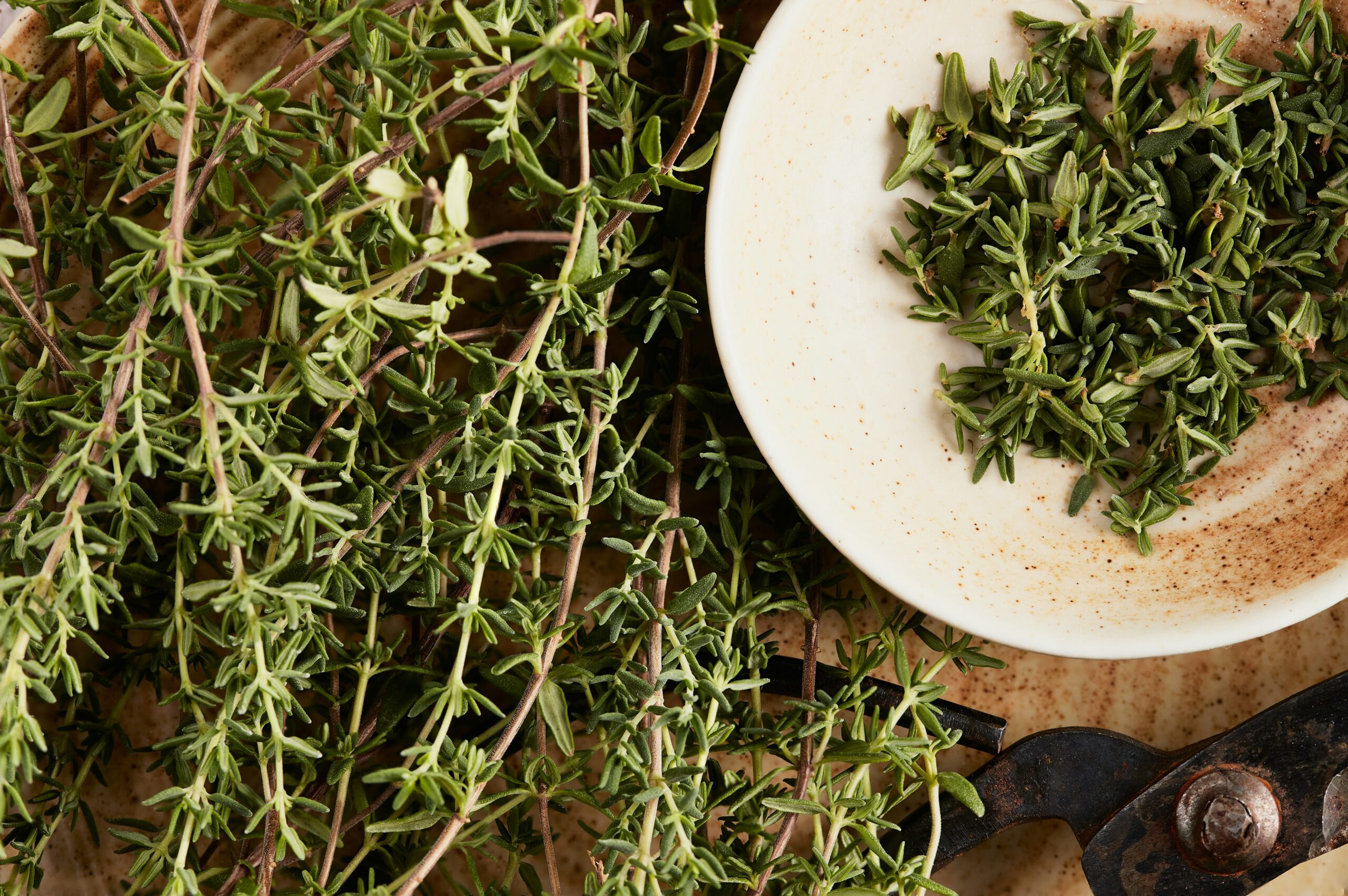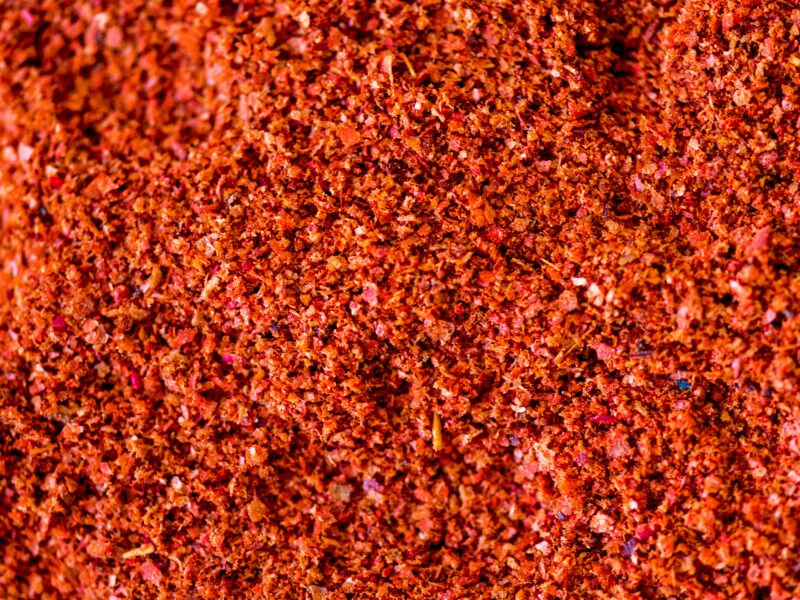Thyme is a beloved herb known for its versatility in the kitchen, providing a rich, earthy flavor that complements both savory and sweet dishes. A staple in Mediterranean, French, and Italian cuisines, thyme is cherished for its ability to elevate simple recipes with its aromatic qualities, and is often combined with rosemary. Whether you’re adding it to a stew, using it in a marinade, or pairing it with lemon in a dessert, thyme brings a unique depth to every dish. But what makes this herb so special, and how can you use it to transform your meals?
Origin and cultivation
Thyme (Thymus vulgaris) is native to the Mediterranean region, where it thrives in the warm, dry climate. Historically, it was used not only as a culinary herb but also for medicinal purposes, owing to its aromatic oils. Today, thyme is cultivated around the world, with significant growing areas in France, Spain, Italy, and even parts of the United States.
The herb is harvested for its leaves, which can be used fresh or dried. When fresh, thyme has a softer, more delicate flavor, while dried thyme offers a concentrated, robust taste that lasts much longer.
What does thyme taste like?
Thyme is characterized by its earthy, slightly minty flavor with citrusy, floral undertones. The herb’s savory profile makes it a fantastic addition to a wide range of dishes, from hearty meats to vegetable stews. Thyme’s complexity comes from its balance of warmth and freshness, making it a complementary herb that harmonizes with other spices like rosemary, oregano, and garlic.
Flavor nuances
- Earthy with hints of mint and citrus
- Savory and slightly floral
- Pairs with rosemary, garlic, lemon, and oregano
Thymian substitutes – what can you use instead?
If you find yourself out of thyme, several herbs can step in as excellent substitutes, although each will bring a slightly different flavor profile to your dish. Here are some options:
- Oregano: With its robust flavor, oregano is an excellent thyme substitute, although it has a more pungent taste.
- Marjoram: This herb offers a milder, sweeter flavor and works well in dishes where thyme would be used.
- Sage: A more earthy and slightly peppery herb, sage can replace thyme in hearty dishes, though it carries a stronger flavor.
- Basil: While sweeter and milder than thyme, basil can work in some Mediterranean and Italian dishes.
Difference between fresh and dried thyme
Fresh thyme tends to have a more delicate flavor with a subtle citrusy note, making it ideal for garnishing dishes or adding toward the end of cooking. On the other hand, dried thyme is more concentrated, so it’s perfect for slow-cooked dishes, sauces, or stews where a longer cooking time allows the herb’s flavor to meld with other ingredients.
How to use thyme in cooking
Thyme is a versatile herb, finding its place in a wide range of dishes across different cuisines. Here’s how you can incorporate thyme into your cooking:
In savory dishes:
- Roasted meats: Thyme is a classic seasoning for roasted meats such as lamb, chicken, and beef. It pairs especially well with fatty cuts, balancing richness with its earthy notes.
- Soups and stews: Thyme is a key ingredient in stews, soups, and sauces, adding depth to broths and complementing root vegetables and legumes.
- Marinades and sauces: Thyme is great for infusing oils and vinegars in marinades, and it adds a warm, herbal layer to tomato sauces and gravies.
In sweet dishes:
- Lemon desserts: Lemon and thyme make a perfect pair, so try adding it to lemon cakes, tarts, or sorbets for a fragrant, citrusy flavor.
- Herbal syrups and teas: Thyme can be used to create flavorful syrups or steeped in tea, particularly when combined with honey or citrus for a refreshing, herbal infusion.
- Roast chicken with thyme: A classic dish where thyme infuses the meat with aromatic flavor
- Herbed bread: Adds an earthy flavor to savory breads like focaccia or ciabatta
- Thyme-infused cocktails: Add thyme to lemon-based cocktails or gin and tonics for a refreshing, herbal note
Cooking tips:
- ✔ Fresh thyme can be used liberally in garnishes or cooked in longer dishes, but dried thyme should be used more sparingly as it has a more concentrated flavor.
- ✔ Fresh thyme should be stored in the refrigerator, wrapped in a damp paper towel, while dried thyme should be kept in an airtight container away from sunlight to preserve its potency.
- ✔ Thyme goes well with rich, savory dishes like roasts, stews, and marinades. It also pairs beautifully with lemon and garlic for added brightness.
Where can you buy thyme?
Thyme is widely available in both fresh and dried forms. You can find it at most grocery stores, especially in the herb section. Specialty spice shops or Mediterranean markets often carry high-quality thyme, both fresh and dried. Additionally, online retailers offer a variety of thyme products, including organic and bulk options.
Why thyme deserves a place in your kitchen
Thyme is a versatile herb with a complex, earthy flavor that can enhance both savory and sweet dishes. Its ability to pair with a variety of ingredients, from meats to citrus, makes it a go-to herb in many kitchens. Whether you use it fresh or dried, thyme’s flavor adds depth and aroma to your culinary creations. Don’t forget to experiment with thyme!


